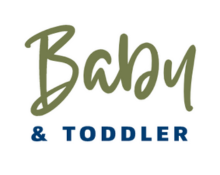Foremilk and hindmilk are terms used to describe different stages of breast milk that a baby receives during a feeding session. Here’s an explanation of each:
Foremilk: Foremilk refers to the milk that is released at the beginning of a feeding. It is typically thinner and more watery in consistency. Foremilk is rich in carbohydrates, proteins, and certain vitamins. It quenches the baby’s thirst and provides essential nutrients for growth and development. The high lactose content of foremilk helps provide energy to the baby.
Hindmilk: Hindmilk, also known as “fattier milk,” is the milk that is released towards the end of a feeding. As the feeding session progresses, the fat content of the milk increases. Hindmilk has a creamier texture and a higher fat content compared to foremilk. This higher fat content provides essential calories for the baby’s growth, helps promote weight gain, and aids in the development of the baby’s brain and nervous system.
It’s important to note that the transition from foremilk to hindmilk is gradual and can vary from one feeding session to another and from one breastfeeding session to the next. The exact proportion of foremilk and hindmilk a baby receives can depend on factors such as the length of the feeding, the baby’s feeding patterns, and the mother’s milk supply.
Balancing Foremilk and Hindmilk: It’s generally recommended to allow the baby to nurse on one breast until they are satisfied or show signs of being full before switching to the other breast. This ensures that the baby receives a good balance of foremilk and hindmilk during each feeding. Switching breasts too quickly may result in the baby getting more foremilk and less hindmilk.
It’s important to note that if a baby is gaining weight adequately, has sufficient wet and soiled diapers, and appears content and healthy, the balance of foremilk and hindmilk is likely appropriate. However, if there are concerns about milk supply or the baby’s weight gain, consulting with a lactation consultant or healthcare professional can provide guidance and support.
Remember, breastfeeding is a dynamic process, and the composition of breast milk naturally adjusts to meet the changing needs of the baby. Trusting your body’s ability to provide the appropriate balance of foremilk and hindmilk is key to successful breastfeeding.
